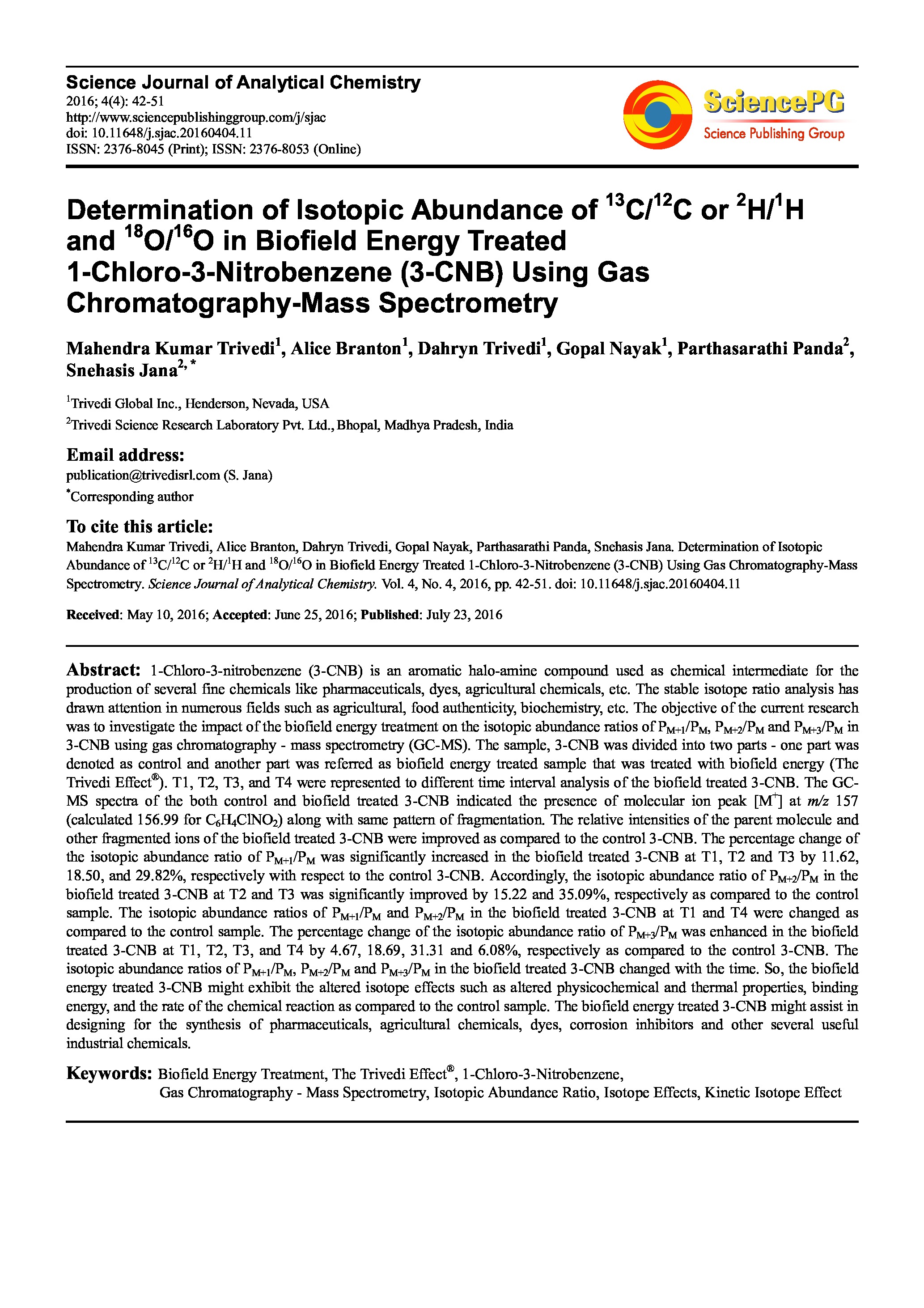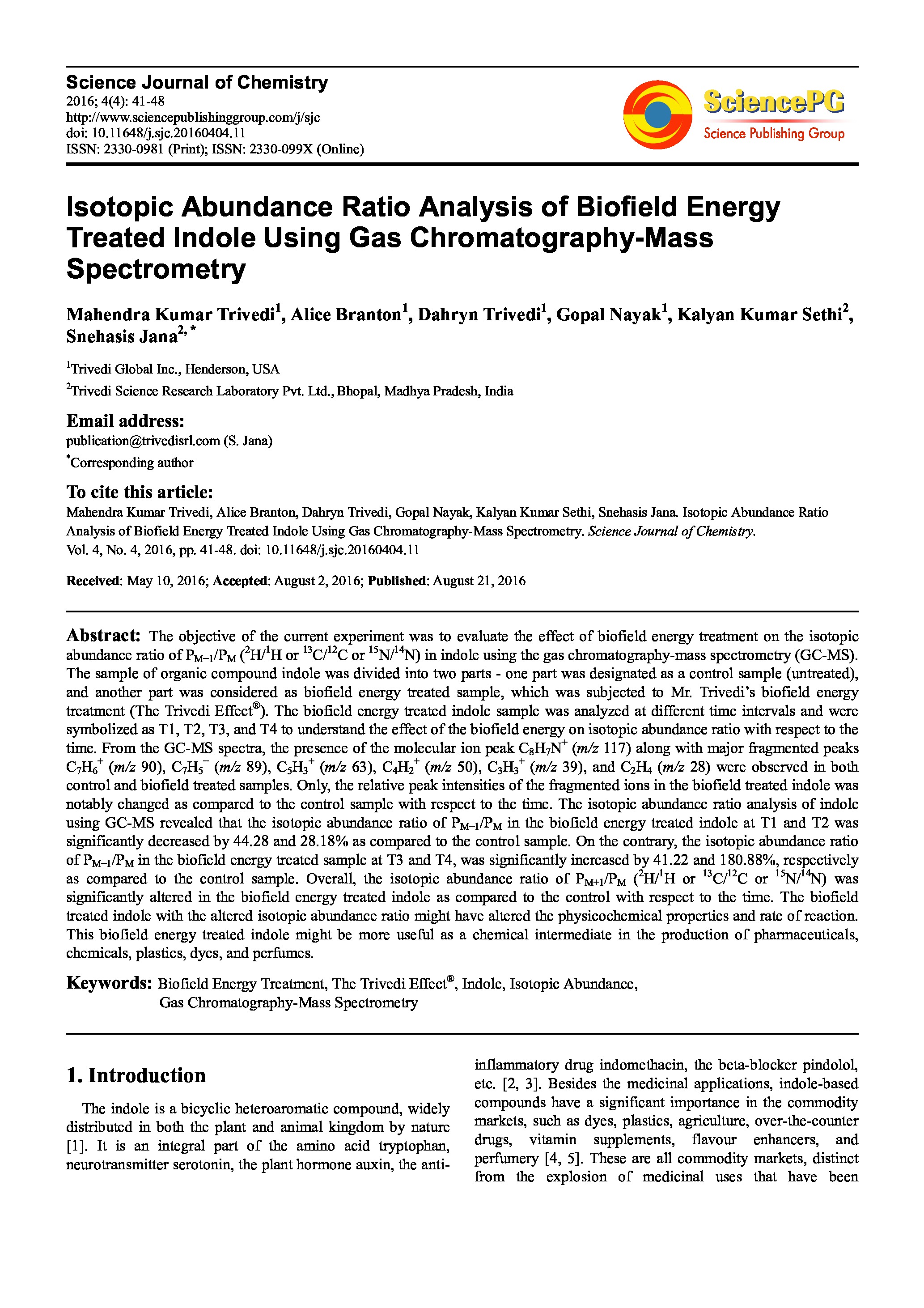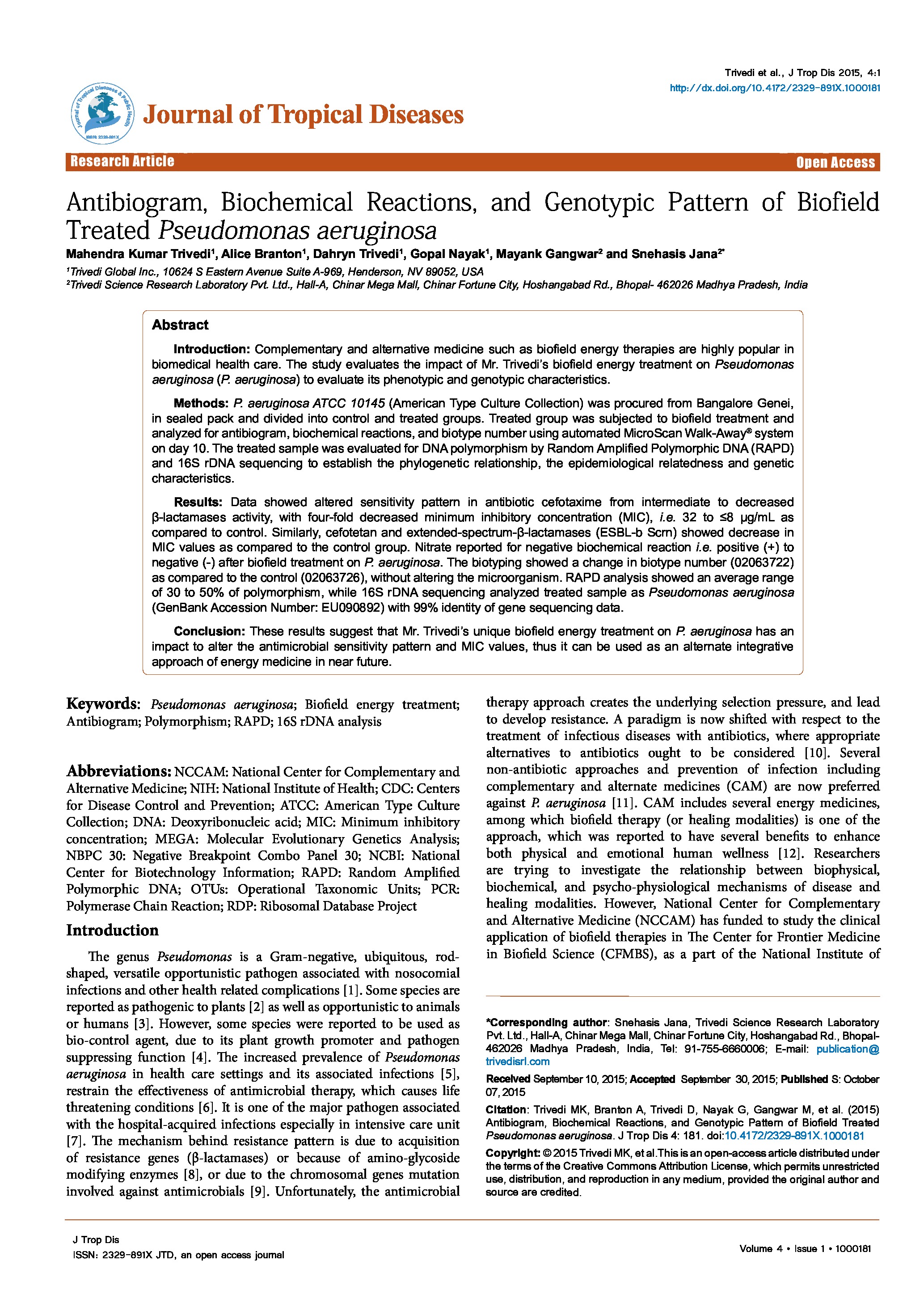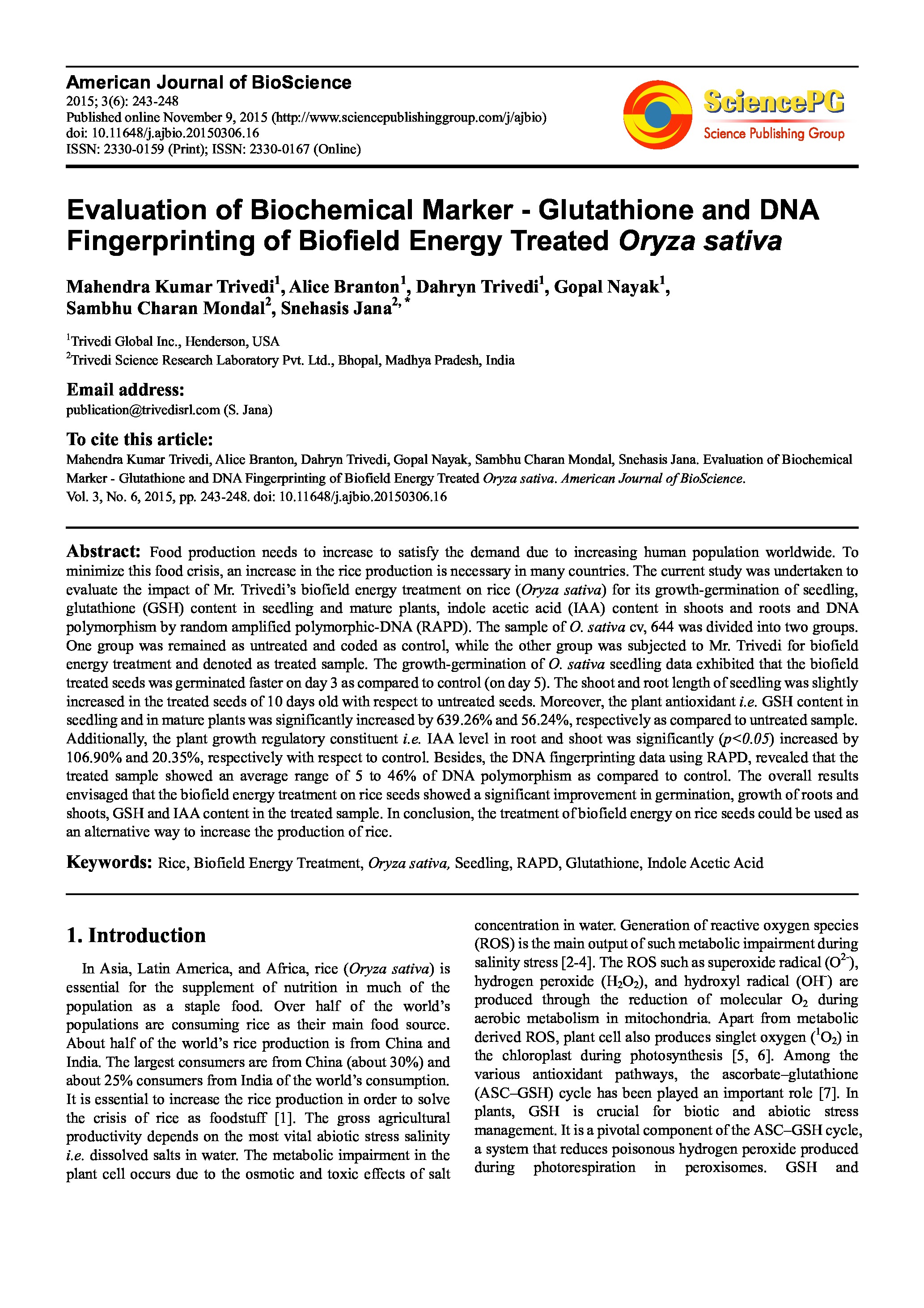Date of upload:
14.12.2016
Co-author:
Mahendra Kumar Trivedi, Alice Branton, Dahryn Trivedi, Parthasarathi Panda, Snehasis Jana
Abstract:
1-Chloro-3-nitrobenzene (3-CNB) is an aromatic halo-amine compound used as chemical intermediate for the production of several fine chemicals like pharmaceuticals, dyes, agricultural chemicals, etc. The stable isotope ratio analysis has drawn attention in numerous fields such as agricultural, food authenticity, biochemistry, etc. The objective of the current research was to investigate the impact of the biofield energy treatment on the isotopic abundance ratios of PM+1/PM, PM+2/PM and PM+3/PM in 3-CNB using gas chromatography - mass spectrometry (GC-MS). The sample, 3-CNB was divided into two parts - one part was denoted as control and another part was referred as biofield energy treated sample that was treated with biofield energy (The Trivedi Effect®). T1, T2, T3, and T4 were represented to different time interval analysis of the biofield treated 3-CNB. The GC-MS spectra of the both control and biofield treated 3-CNB indicated the presence of molecular ion peak [M+] at m/z 157 (calculated 156.99 for C6H4ClNO2) along with same pattern of fragmentation. The relative intensities of the parent molecule and other fragmented ions of the biofield treated 3-CNB were improved as compared to the control 3-CNB. The percentage change of the isotopic abundance ratio of PM+1/PM was significantly increased in the biofield treated 3-CNB at T1, T2 and T3 by 11.62, 18.50, and 29.82%, respectively with respect to the control 3-CNB. Accordingly, the isotopic abundance ratio of PM+2/PM in the biofield treated 3-CNB at T2 and T3 was significantly improved by 15.22 and 35.09%, respectively as compared to the control sample. The isotopic abundance ratios of PM+1/PM and PM+2/PM in the biofield treated 3-CNB at T1 and T4 were changed as compared to the control sample. The percentage change of the isotopic abundance ratio of PM+3/PM was enhanced in the biofield treated 3-CNB at T1, T2, T3, and T4 by 4.67, 18.69, 31.31 and 6.08%, respectively as compared to the control 3-CNB. The isotopic abundance ratios of PM+1/PM, PM+2/PM and PM+3/PM in the biofield treated 3-CNB changed with the time. So, the biofield energy treated 3-CNB might exhibit the altered isotope effects such as altered physicochemical and thermal properties, binding energy, and the rate of the chemical reaction as compared to the control sample. The biofield energy treated 3-CNB might assist in designing for the synthesis of pharmaceuticals, agricultural chemicals, dyes, corrosion inhibitors and other several useful industrial chemicals.




